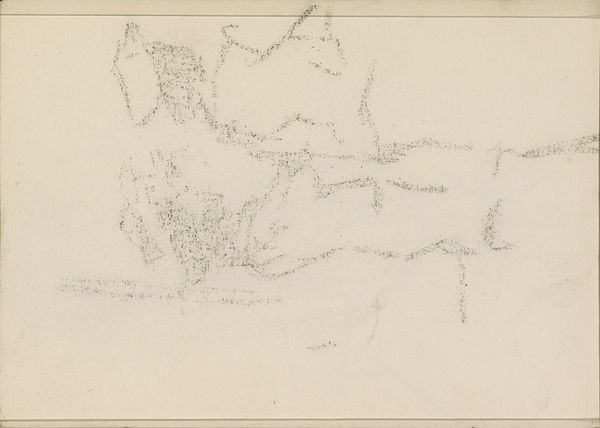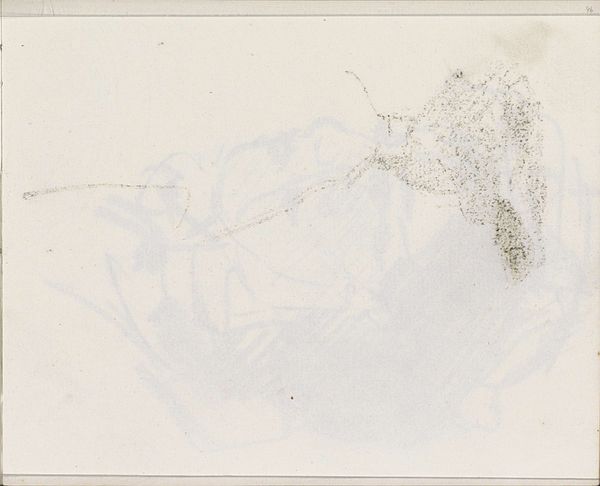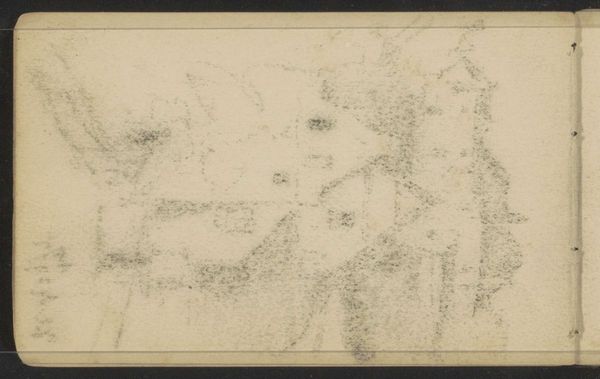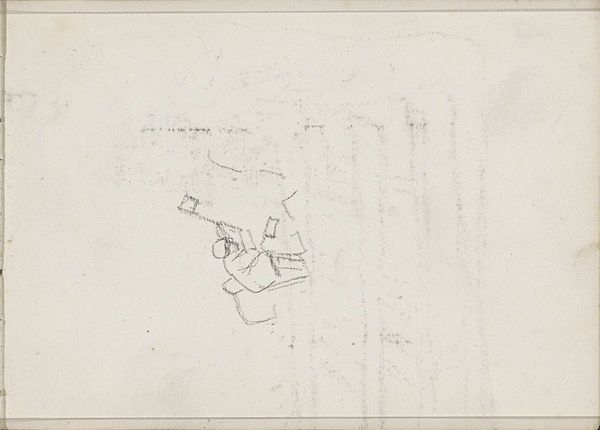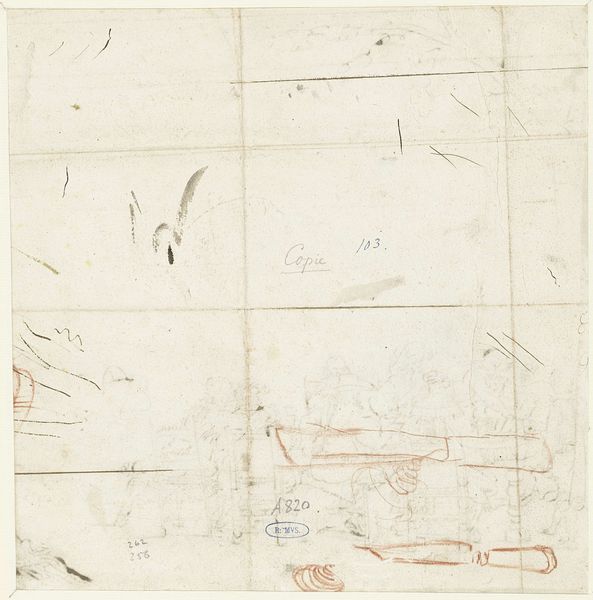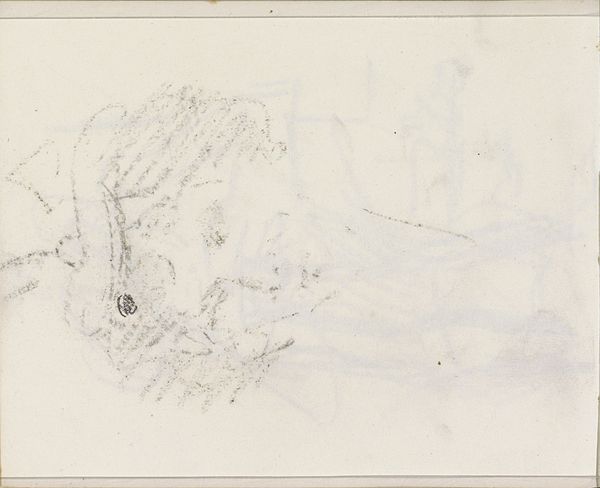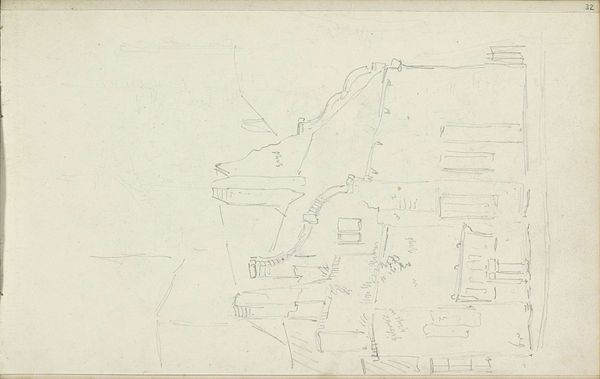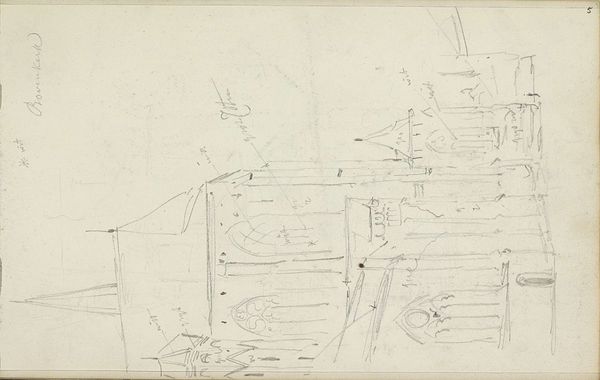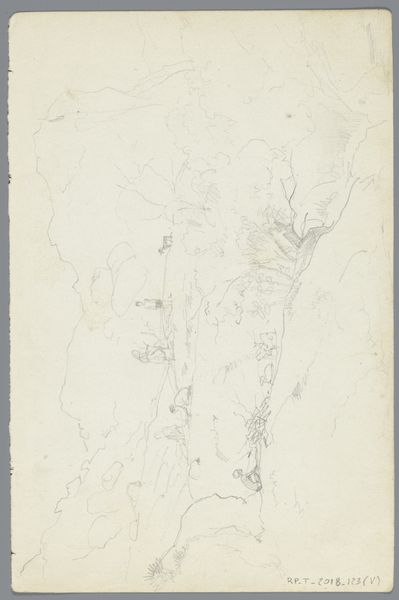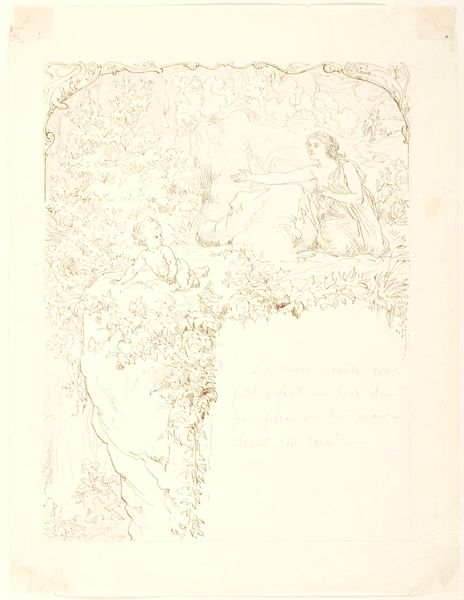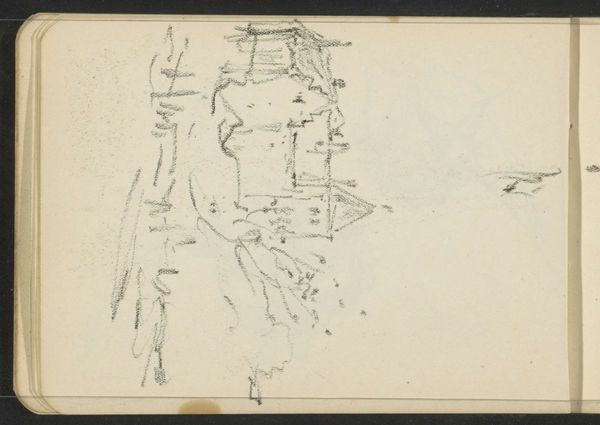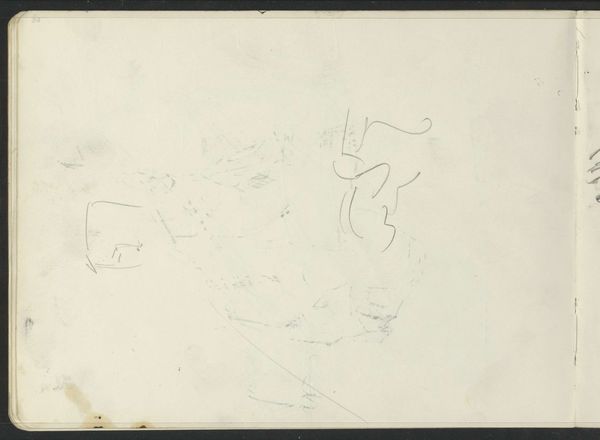
Copyright: Rijks Museum: Open Domain
Curator: This pencil drawing is called "Drie artiesten op het toneel" which translates to "Three Artists on Stage" by Isaac Israels. It's part of the collection here at the Rijksmuseum and dates sometime between 1875 and 1934. Editor: My initial impression is ethereal and ephemeral. The sketchiness gives a sense of movement and perhaps even the fleeting nature of performance itself. It feels unfinished and raw. Curator: Indeed. The apparent lack of finish raises some fascinating questions about its purpose. Was it a preliminary study? An exercise in capturing a momentary impression? The material itself—pencil on paper—speaks to a rapid, easily reproducible form of artistic expression. I wonder what sort of paper Israels used. The support often dictated the work. Editor: For me, the most striking aspect is the implied narrative. These figures are *on stage*. The symbolic weight of performance, the act of presenting oneself, is powerful. There is something veiled about their identity that this light style of rendering does little to dissipate. Who were these performers, and what stories did they embody? Curator: The Impressionist influence is clear, particularly in the emphasis on capturing a transient moment. What fascinates me is that while ostensibly representing artists, the raw sketch emphasizes labor. The act of drawing itself, the visible hand of the artist—becomes the spectacle. Editor: I also see the tradition of commedia dell'arte. The figures, though undefined, could represent stock characters, universal archetypes engaged in timeless dramas. Curator: It is intriguing to note the lack of precise detail—the deliberate vagueness—serves to elevate the mundane scene of labor into an art form. We aren’t sure what material objects are at play; the pencil drawing seems to render itself. Editor: Perhaps the point isn't to identify the specific figures, but to explore the archetypal themes of performance, identity, and illusion. It certainly makes you think about the psychology of both the performer and the audience. Curator: Ultimately, this piece serves as a compelling illustration of the value placed on immediacy, production, and on artmaking itself within a rapidly industrializing world. Editor: And for me, it reveals how certain universal symbols and scenarios—the stage, the performer, the act of observation—continue to resonate across centuries. Thank you for the fresh perspective.
Comments
No comments
Be the first to comment and join the conversation on the ultimate creative platform.

